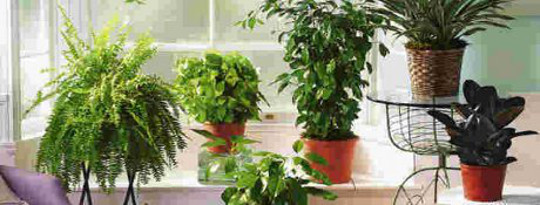
Leafy Air Purifying: Improving Indoor Air Quality with Plants
My mom kept asking us whether or not we wanted a Peace Lily plant that she had received from one of her friends. One day, mom showed up with the plant tucked away in a Styrofoam drip tray. I put it on our fireplace mantel and promptly ignored it until I had time to give it a permanent home.
However, as I started researching indoor air purifiers, mostly of the HEPA variety as well as plants that help clean the air of your home, I saw that Peace Lilies were considered to be one of the best plants for purifying indoor air.
Specialized Air Purifiers to Address Environmental Chemicals
I had already been planning on using plants for indoor air quality since I wasn't sure if I wanted to spring the money for the specialized air purifiers that address environmental chemicals. Most of the machine-based purifiers (in other words, not plants) were geared to filter out dust and allergens and weren't made to work on PDBEs, metals and the like.
I was already wondering how effective an air purifier would be anyway, unless I got one specifically for chemical filtration. I also was not interested in getting an air purifier the size of an armchair and as loud as a bus. I've been around the more industrial air purifiers and, while they do the job, they are big and annoying.
Get The Latest By Email
Houseplants: From Two Cacti to a Lush Tropical Oasis and Clean Air
On the other hand, we are really lackadaisical about houseplants. At the time, we only had two plants in the house and both were of the low-maintenance cactus variety.
When my husband underwent his stem cell transplants, we were instructed to remove all cut flowers and house plants during that year because of the risk of infection from bacteria in the flowers and from mold in the dirt. Even though his immune system was mostly recovered (he was still on a number of immune suppressants), we had not gone out of our way to get any new plants.
The only reason we had two cacti was because my kids went through a period of absolute fixation with anything related to deserts. In any case, if we were going to turn our home into a lush tropical oasis for cleaning the air, we needed plants that were easy to care for and required minimal maintenance.
Removing Environmental Contaminants with 15 to 20 Houseplants
 I was happy to read that our Peace Lily, aka Spathiphyllum, didn't need much in the way of excessive light or water to survive. More importantly, it cleaned indoor air of many environmental contaminants including benzene, formaldehyde, trichloroethylene and other pollutants like toluene and xylene.
I was happy to read that our Peace Lily, aka Spathiphyllum, didn't need much in the way of excessive light or water to survive. More importantly, it cleaned indoor air of many environmental contaminants including benzene, formaldehyde, trichloroethylene and other pollutants like toluene and xylene.
Back in the 1980s, NASA reported some research it did on the value of indoor plants in cleaning up air quality. There was a lot of concern over the hazardous working environment in Skylab, given the fact that the synthetic materials inside emitted more than 100 chemicals. Over the years, researchers looked at more than 30 different plants to find the ones that are best at cleaning indoor air.
Not wanting to just stuff the house full of one kind of plant, even though the Peace Lily was allegedly one of the "best" plants for the job, I went in search of some other plants to liven things up. To purify the indoor air of your home, you need 15 to 20 houseplants for a 1,800 square foot home. Since we spent most of our time on the main floor and little in the basement, I focused on just that part of the house. I figured about 15 houseplants (from the recommended list) would do the job nicely.
Removing 80% of Formaldehyde Pollutants from an Enclosed Room in 24 Hours
Other research done over the years has shown that many indoor plants reduce volatile organic compounds by up to 100% over 24 hours in a closed environment. In fact, a spider plant alone can remove 80% of formaldehyde pollutants from an enclosed room in 24 hours.
What was even more important, since we lived in Seattle (the land of mold and mildew), was that these plants cleaned the air by metabolizing pollutants drawn in through their leaves and emitted a substance that suppressed the growth of mold, spores and bacteria. (Source: NY Times article)
Since we had an enormous mold problem in our master bathroom and, as a result, our bedroom (we didn't have a fan in the attached bathroom), the first places I targeted for plants were the bedroom and bathroom in addition to the living room. I didn't mind having plants that not only cleaned the air of chemical contaminants, but also helped deal with our mold and mildew issues which were nearly impossible to control without some toxic chemicals themselves.
Shortlist for Various Rooms in the House
On my shortlist of plants to buy was a spider plant (which battles benzene, formaldehyde, carbon monoxide and xylene), a gerbera daisy for the dining room (trichloroethylene and benzene), snake plant for the bathroom (formaldehyde), dracaena for the bedroom (xylene, trichloroethylene and formaldehyde), aloe vera for the kitchen (formaldehyde and benzene) and English ivy for the kids' bathroom (reduces airborne fecal matter).
I had recently moved a dwarf banana plant indoors since it didn't like being outside during the fall or winter in our area. Since it was a tropical plant, I thought I'd look into its air-purifying possibilities, even though I hadn't yet seen it on the other plant lists. Lo and behold, I found it on the shortlist in an article on the Daily Green website. That list led me to another list which had on it, prominently, a Christmas cactus (not actually a cactus), which I had also recently purchased.
Beware of Plastic Pots Off-Gassing VOCs
One last thing I found out about house plants was that those planted in plastic pots or grown in a nursery where a lot of pesticides were used can off-gas more volatile organic compounds (VOCs) than previously thought. As I found plants for the house, I made sure to re-pot them into non-plastic containers.
©2011 by Deanna Duke. All rights reserved.
Reprinted with permission of the publisher,
New Society Publishers. http://newsociety.com.
This article was adapted with permission from the book:
The Non-Toxic Avenger: What You Don’t Know Can Hurt You
by Deanna Duke.
 After coming to terms with the fact that the autism and cancer which had impacted her family were most likely the result of environmental toxins, author Deanna Duke undertook a mission to dramatically reduce her family's chemical exposure. She committed to drastically reducing the levels of all known chemicals in both her home and work environments. Follow Deanna's journey and learn about your day-to-day chemical exposure, the implications for your health, and what you can do about it.
After coming to terms with the fact that the autism and cancer which had impacted her family were most likely the result of environmental toxins, author Deanna Duke undertook a mission to dramatically reduce her family's chemical exposure. She committed to drastically reducing the levels of all known chemicals in both her home and work environments. Follow Deanna's journey and learn about your day-to-day chemical exposure, the implications for your health, and what you can do about it.
Click here for more info and/or to order this book.
About the Author
 Deanna Duke is an environmental writer, urban homesteader, and author of the highly acclaimed environmental blog, The Crunchy Chicken (www.thecrunchychicken.com). The focus of her work is in educating others on environmental issues and explaining how she and her family have not only converted to a low-impact lifestyle, but also reduced their exposure to toxic chemicals in their home, work and school environments. In addition to her blog, Deanna also writes as an Expert Urban Homesteader for Mother Earth News Online and is the Personal Care Consultant for the eco-makeover television show, Mission: Sustainable. Visit her on Facebook at https://www.facebook.com/TheCrunchyChicken.
Deanna Duke is an environmental writer, urban homesteader, and author of the highly acclaimed environmental blog, The Crunchy Chicken (www.thecrunchychicken.com). The focus of her work is in educating others on environmental issues and explaining how she and her family have not only converted to a low-impact lifestyle, but also reduced their exposure to toxic chemicals in their home, work and school environments. In addition to her blog, Deanna also writes as an Expert Urban Homesteader for Mother Earth News Online and is the Personal Care Consultant for the eco-makeover television show, Mission: Sustainable. Visit her on Facebook at https://www.facebook.com/TheCrunchyChicken.







